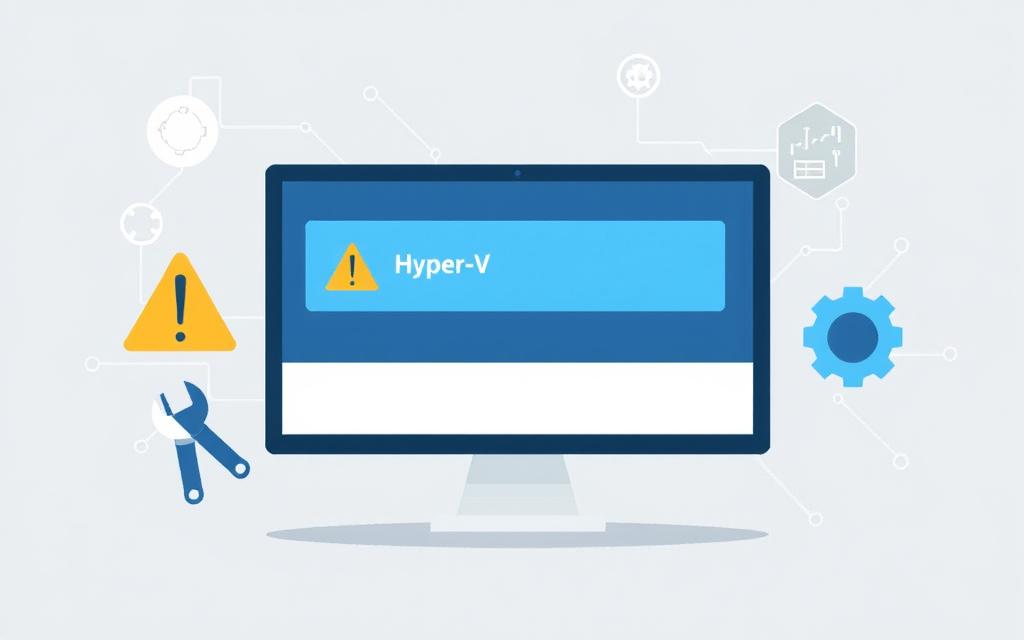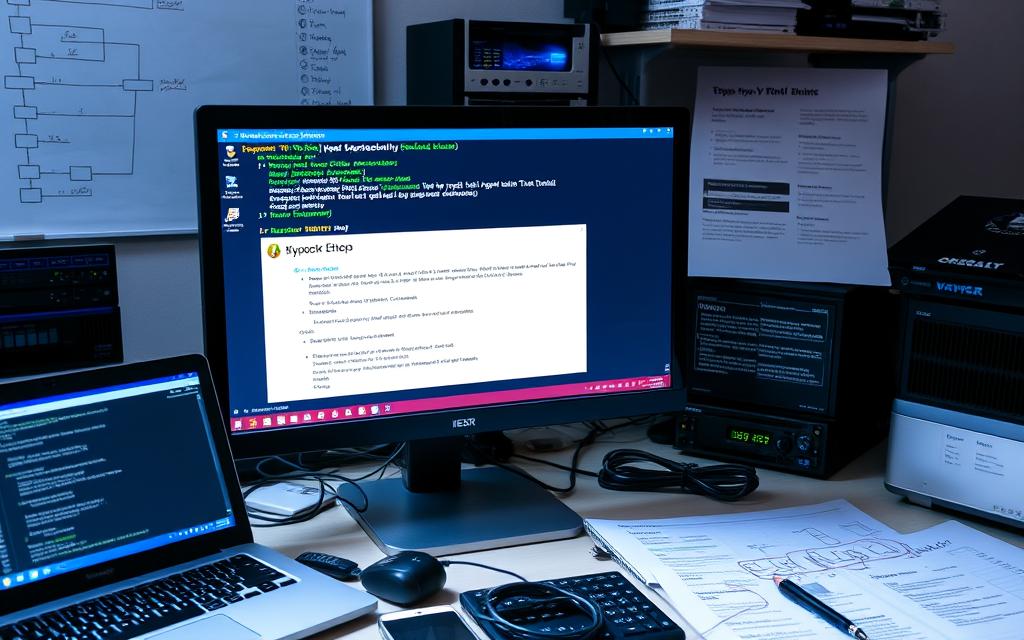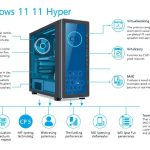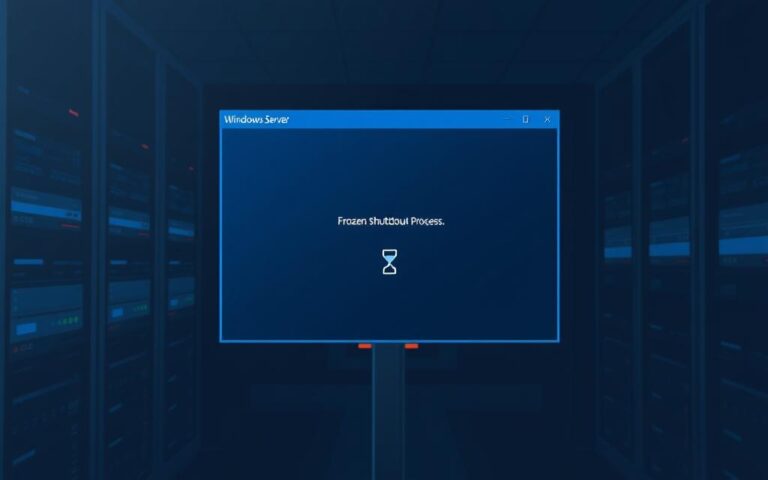Fixing Hyper-V WinRM Operation Errors
Managing a Hyper-V environment well is very important. But, as users dive into this complex area, they often face WinRM errors. These errors can be very frustrating, especially when managing remotely. By knowing the common issues and using good troubleshooting steps, users can keep their virtual system working well.
It’s vital to fix these WinRM errors. They slow down managing virtual machines and can affect performance and access. So, we will share tips and solutions to help you deal with these virtualisation challenges smoothly.
For a smooth user experience, consider how cookies affect your use of platforms. This is well explained in our Cookie Policy. Understanding this will help you fix Hyper-V WinRM operation errors better.
Understanding Hyper-V WinRM Operation Errors
Windows Remote Management (WinRM) is key for managing Windows systems, especially with Hyper-V. It helps administrators manage tasks remotely with ease. This part explains WinRM’s basics, its importance in Hyper-V, and common error messages.
What is WinRM?
WinRM follows the WS-Management protocol, allowing remote management across various platforms. It lets system administrators control machines from afar, manage settings, and gather data. Before using it, you must set up listeners as communication with WinRM is off by default.
The Importance of WinRM in Hyper-V
For Hyper-V, WinRM is crucial for remote handling of virtual machines and settings. It works with the Hyper-V Virtual Machine Management service, enabling tasks like performance checks, updates, and managing virtual machines. A proper WinRM setup is vital for smooth remote management.
Common WinRM Operation Errors
Errors with WinRM can hinder managing Hyper-V. These include authentication issues, connectivity glitches, and wrong settings leading to admin headaches. For example, you might see “The operation is not supported” if settings are incorrect or there’s a firewall blocking.
For better troubleshooting, check the configuration and update the Hyper-V Server and clients using Windows Update. You can find more help and information on common problems with WinRM and Hyper-V through online guides and forums.
The Operation on Computer Failed Hyper-V WinRM
The message “the operation on computer failed” often complicates Hyper-V management. It usually comes from connectivity issues or not having enough permissions. Finding the specific error code or message is key. For instance, some users face issues because the computer name won’t resolve in the domain. This highlights how vital network and DNS settings are.
Identifying the Error
Knowing the details of Hyper-V errors is crucial for fixing them. For instance, error code 2150859046 appears during WinRM operations. This error highlights the importance of checking the setup carefully. Solutions can also be traced through event logs and experiences of others. For example, executing “Enable-PSRemoting” on Windows has helped some. Those using Hyper-V 2016 made progress by checking services, firewall, and network.
Analyzing the Impact on Hyper-V Management
Errors can severely affect managing Hyper-V. Connectivity issues might stop you from handling virtual machines from afar. This could halt updates and maintenance. It’s important for administrators to fully understand these problems. Sharing experiences with peers can shed light on solutions. For more help, check the detailed guide here.

Steps to Fix the Hyper-V WinRM Operation Errors
To solve Hyper-V WinRM operation errors, go step by step, focusing on key areas. This will make your virtual environments work better.
Verifying the Virtual Machine Management Service
First, check if the Virtual Machine Management Service (VMMS) is on. This is key for linking Hyper-V Manager properly. If it’s off, managing VMs becomes tough, leading to WinRM troubles. You can check its status in the Services management console.
Ensuring Proper Permissions for Access
It’s important to check user account permissions next. The account used with Hyper-V Manager must be in the Administrators or Hyper-V Administrators group. Without right access, you can’t do tasks that need WinRM, making VM management frustrating.
Checking Network Configuration and Firewalls
Network setup is vital for good connectivity. Make sure your firewall has the right exceptions for WinRM. Wrong firewall settings can stop servers talking to each other. Changing network profiles from Public to Private often fixes these issues. Also, check that the right ports are open for managing Hyper-V well.
Following these steps will help you overcome common Hyper-V WinRM operation errors. This leads to better and more reliable VM management.
For more details on data privacy and user rights, check our privacy policy.
Advanced Troubleshooting Techniques
Advanced troubleshooting techniques are crucial for solving Hyper-V WinRM operation errors. They help us use PowerShell diagnostics, check group policy, and run effective WinRM tests. This can solve complex problems.
Using PowerShell Commands for Diagnostics
PowerShell commands are key for administrators to diagnose issues. Test-WSMAN and winrm get winrm/config reveal important WinRM configuration info. They help find and fix issues that stop WinRM from working correctly.
Reviewing Group Policy Settings
Group policy significantly affects Windows machines’ interactions. It’s vital to check these settings carefully. This ensures no policy accidentally blocks WinRM connections. Sometimes, policies limit permissions, hindering necessary communications.
Testing WinRM Connection and Configurations
Systematic WinRM testing builds confidence in your settings. It checks if your setup works as expected. It’s important to guarantee that your configurations let Hyper-V environments communicate and manage smoothly.
| Error Code | Description | Impact on Migration |
|---|---|---|
| 0x80071398 | Move action didn’t complete | May cause live migration failures |
| 0x8007271D | WSAEACCES – access forbidden | Can lead to migration blockages |
| 0x800705AA | Insufficient system resources | Results in migration issues |
| N/A | A virtual disk support provider for the specified file was not found | Can result in migration failures |
| N/A | Different microcode revisions on nodes | May lead to live migration failures |
| N/A | Hardware incompatibility | Prevents VM transfer to the destination |
Conclusion
Fixing Hyper-V WinRM operation errors is crucial for smooth virtual environment management. The steps outlined in this guide are key to solving WinRM errors. They range from checking the Virtual Machine Management Service to checking network setups.
To manage Hyper-V better, admins must follow these steps carefully. Advice on setting up TrustedHosts and firewall rules is very helpful. This helps fix issues quickly and prevent operational problems. You now have what it takes to troubleshoot effectively in many situations.
Dealing with WinRM operation errors early keeps services running without a hitch. By using the solutions shared, you make your Hyper-V more reliable. This means your virtual management will run well and keep things efficient.
FAQ
What is WinRM and why is it important for Hyper-V management?
WinRM stands for Windows Remote Management. It’s a Microsoft protocol that lets you manage Windows machines from afar. For Hyper-V environments, it’s key because it lets admins handle tasks remotely. This boosts efficiency and automation in managing virtual setups.
What are common errors encountered with Hyper-V WinRM?
With Hyper-V WinRM, you might face connectivity issues, login problems, or setup mistakes. These can stem from wrong settings, firewalls blocking ports, or user accounts lacking the right access to Hyper-V Manager.
How can I troubleshoot the “the operation on computer failed” error?
This error can point to network or permission issues. Fix it by checking if Virtual Machine Management Service (VMMS) is on. Also, make sure your user account has the right access, and that your network settings welcome WinRM connections.
What are the necessary permissions for accessing Hyper-V Manager?
Access to Hyper-V Manager needs an account in the Administrators or Hyper-V Administrators group. Getting these permissions right is vital for effective remote management.
What steps should I take to resolve WinRM operation errors?
First, check if the Virtual Machine Management Service (VMMS) is up and running. Then, ensure your account has the needed permissions. Also, review your network and firewall settings to make sure WinRM’s required ports are open. This step-by-step method can solve many common problems.
How can PowerShell commands assist in diagnosing WinRM issues?
PowerShell commands, like `Test-WSMAN` and `winrm get winrm/config`, give diagnostic info. They help spot WinRM setting errors. These commands are great for deep dives into troubleshooting in Hyper-V setups.















